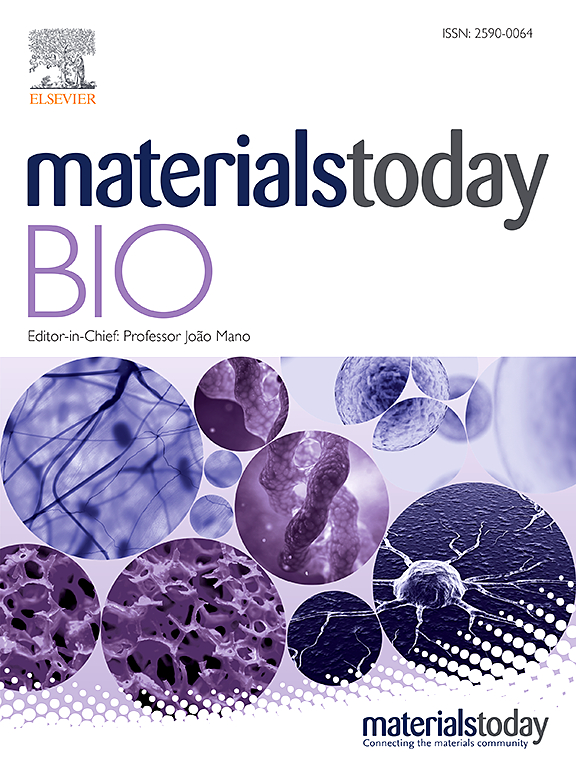Development of a decellularized extracellular matrix-derived wet adhesive for sustained drug delivery and enhanced wound healing
IF 8.7
1区 医学
Q1 ENGINEERING, BIOMEDICAL
引用次数: 0
Abstract
Complete tissue recovery following traumatic injury remains a major clinical challenge. While tissue adhesives show promise for managing traumatic injuries, developing materials with robust wet adhesion and high biocompatibility remains difficult. Decellularized extracellular matrix (ECM)-derived materials are widely utilized in tissue engineering due to their superior biocompatibility and bioactivity. In this study, a wet adhesive is developed by functionalizing ECM with dopamine. The resulting ECM-dopamine exhibits strong wet adhesion and excellent biocompatibility. Furthermore, ECM-dopamine can be engineered into a drug delivery platform for small agents and macromolecules. Solid lipid nanoparticles (SLNs) are incorporated into ECM-dopamine to enable sustained release of small molecules. The ECM-dopamine-SLN system ensures sustained drug release for at least one week upon adhesion to target tissues. ECM-dopamine-SLN loaded with antimicrobials accelerates wound healing and promotes angiogenesis by modulating the inflammatory response in a mouse skin excision model. Additionally, ECM-dopamine can deliver bioactive macromolecules to injured tissue. ECM-dopamine loaded with insulin-like growth factor-1 promotes skeletal muscle regeneration in a mouse volumetric muscle loss model, likely through the modulation of M2-like macrophage polarization. The dual functionality of ECM-dopamine as both a wet adhesive and a drug delivery platform offers significant potential for regenerative medicine applications.

求助全文
约1分钟内获得全文
求助全文
来源期刊

Materials Today Bio
Multiple-
CiteScore
8.30
自引率
4.90%
发文量
303
审稿时长
30 days
期刊介绍:
Materials Today Bio is a multidisciplinary journal that specializes in the intersection between biology and materials science, chemistry, physics, engineering, and medicine. It covers various aspects such as the design and assembly of new structures, their interaction with biological systems, functionalization, bioimaging, therapies, and diagnostics in healthcare. The journal aims to showcase the most significant advancements and discoveries in this field. As part of the Materials Today family, Materials Today Bio provides rigorous peer review, quick decision-making, and high visibility for authors. It is indexed in Scopus, PubMed Central, Emerging Sources, Citation Index (ESCI), and Directory of Open Access Journals (DOAJ).
 求助内容:
求助内容: 应助结果提醒方式:
应助结果提醒方式:


